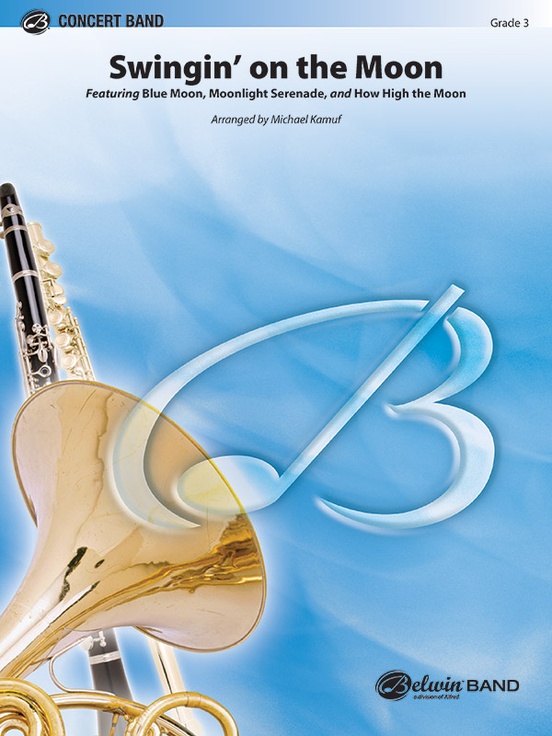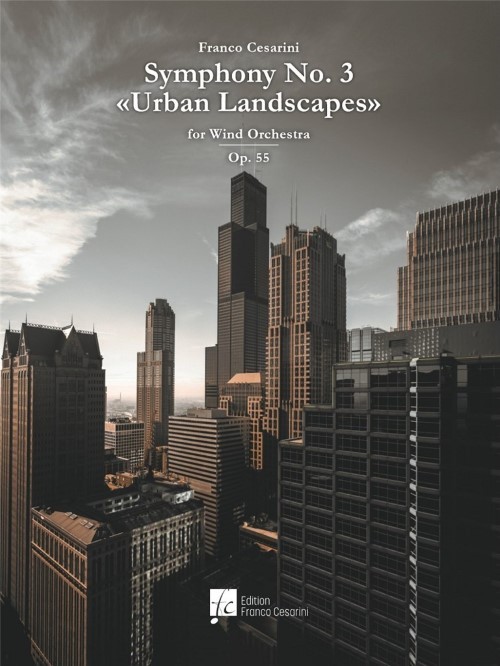Results
-
£13.95
The Very Best of Festival of Music Volume 2
1The Battle of BritainRon GoodwinThe Massed Bands of the Royal Air Force2.182Knightsbridge MarchEric CoatesThe Massed Bands of the Royal Air Force4.183The Dambusters MarchEric CoatesThe Massed Bands of the Royal Air Force3.504All I Ask of YouAndrew Lloyd WebberThe Massed Bands of the Royal Air Force5.055Crown ImperialWilliam WaltonThe Massed Bands of the Royal Air Force9.136Theme from Schindler's ListJohn WilliamsThe Massed Bands of the Royal Air Force3.497The Galloping Majorarr. Gordon JacobThe Massed Bands of the Royal Air Force2.408Salue to Sinatra The Massed Bands of the Royal Air Force9.139Minstrel Boy/Toss the Feathersarr. Rob WiffinThe Massed Bands of the Royal Air Force5.4210South Rampart Street ParadeHaggartThe Massed Bands of the Royal Air Force3.4511Out of the BlueHubert BathThe Massed Bands of the Royal Air Force3.5012The Sword and the Crown (Finale)Edward GregsonThe Massed Bands of the Royal Air Force4.1313Love Changes EverythingAndrew Lloyd WebberThe Massed Bands of the Royal Air Force3.2214The Wind Beneath My WingsSilbar & HenleyThe Massed Bands of the Royal Air Force4.1815Black OrpheusLuis BonfaThe Massed Bands of the Royal Air Force4.5516RAF March PastDavies & DysonThe Massed Bands of the Royal Air Force1.56
Estimated dispatch 7-14 working days
-
£13.95
The Very Best of Festival of Music Volume 3
1In the MoodRazaf & GarlandThe Royal Air Force Squadronaires3.302Moonlight SerenadeMillerThe Royal Air Force Squadronaires4.153Don't Sit Under the Apple TreeStept, Tobias & BrownThe Royal Air Force Squadronaires2.444StardustParish & CarmichaelRoy Castle & Sgt. Geoffrey Lawrence (Trumpets) with The Royal Air Force Squadronaires2.415American PatrolGrayThe Royal Air Force Squadronaires3.406Blue SkiesBerlinThe Royal Air Force Squadronaires2.477A Foggy DayGershwinThe Royal Air Force Squadronaires2.218A Nightingale Sang in Berkeley SquareMaschwitzPeter Appleyard (Vibraphone) with The Royal Air Force Squadronaires4.569Tuxedo JunctionHawkins, Johnson, Dash & FayneThe Royal Air Force Squadronaires3.1710FeverCooley & DavenportThe Royal Air Force Squadronaires3.5711Marching Thro'McParland & StirlingThe Royal Air Force Squadronaires3.2912String of PearlsGrayThe Royal Air Force Squadronaires3.1513After You've GoneCreamer & LaytonPeter Appleyard (Vibraphone) with The Royal Air Force Squadronaires4.1214Birth of the Bluesde Sylva, Brown & HendersonRoy Castle (Vocal & Trumpet) with The Royal Air Force Squadronaires3.1615SkylinerBarnetThe Royal Air Force Squadronaires3.1216Cheek to CheekBerlinThe Royal Air Force Squadronaires4.1417Owed to Mr ChopinDorseyFlight Lieutenant Stuart Stirling (Piano) with The Royal Air Force Squadronaires3.3718Pennsylvania 65000Sigman & GrayThe Royal Air Force Squadronaires3.3719Travelogue: The Big Countryarr. StirlingThe Massed Bands of TheRoyal Air Force and Squadronaires11.06
Estimated dispatch 7-14 working days
-
£95.00
To The Stars! - Nigel Hess
'To the Stars!' is the fruit of a unique collaboration between Nigel Hess and the children of several Bedfordshire schools who were asked to contribute ideas for a libretto based on the themes of space travel and exploration. The work was then performed during a concert at the Royal Albert Hall showcasing the work of Bedfordshire County Music Services. The unusual combination of children's choir and symphonic wind band is wonderfully exciting, and To the Stars! provides an incomparable performing experience for both band and choir, and is also technically demanding and challenging. After a rousing introduction, we hear a countdown to our rocket's 'blast off', and suddenly we are heading out to the planets where we meet aliens with blue eyes and pink ears! After a brief but terrifying skirmish with a black hole we head off to a 'world of many wonders', and as we leave our solar system behind, the piece finishes with a spectacular shout of 'Fly with us - to the stars!'.
In stock: Estimated delivery 1-3 days
-
£157.00
-
£129.00
-
 £7.00
£7.00Philharmonic Phun Phest - Offenbach
This is a clever medley of classical favorites that kicks off with a grandiose setting of the opening of Bach's Toccata and Fugue in D Minor, continues with excerpts from Johann Strauss' beloved Blue Danube Waltz and the opening theme of Mozart's Eine Kleine Nachtmusik and concludes with the rollicking Can-Can from Gait Parisienne. A light-hearted medley that is a delight to experience and a perfect way to introduce these classic pieces to young performers. Duration: 2'20" Key: Bb Ranges: Trumpet - D; Horn - D; Trombone - C
Estimated dispatch 12-14 working days
-
 £58.00
£58.00Selections from H.M.S Pianofore - Arthur Sullivan
A sparkling medley from one of the best-known of Gilbert and Sullivan's operettas has been deftly prepared by the always skillful Andrew Balent. The medley includes five selections from the original work: We Sail the Ocean Blue, I'm Called Little Buttercup (a trumpet solo), I Am the Monarch of the Sea, When I Was a Lad and He Is an Englishman.
Estimated dispatch 12-14 working days
-
 £119.20
£119.20Sinfonisches Praludium (Concert Band - Score and Parts) - Bruckner, Anton - Doss, Thomas
The Symphonic Prelude in C minor is an orchestral composition from the circle of the Austrian composer Anton Bruckner. The unearthing of this work, discovered shortly after World War II, has created confusion, leading to a second, reduced version being attributed to Gustav Mahler, a theory which still holds sway in musical circles today, although there is a high probability that the original composition is indeed by Bruckner himself. Rudolf Krzyzanowski (1895-1911), a pupil of Bruckner, transcribed the score in 1876. The 43-page manuscript bears the inscription Rudolf Krzyzanowski cop. 1876 on the first page; while on the last page is written in blue pencil: By Anton Bruckner. Thomas Doss used a facsimile of this autograph copy as the basic of his instrumentation of the prelude for symphonic wind orchestra.Duration: 6.15
Estimated dispatch 7-14 working days
-
 £80.00
£80.00Swingin' on the Moon (Concert Band - Score and Parts) - Kamuf, Michael
Let's go to the moon! Swingin' on the Moon is a medley of three great American standards is a perfect choice to teach or reinforce swing style to your students. Featuring "Blue Moon," "Moonlight Serenade," and "How High the Moon," this arrangement by Michael Kamuf is bound to be a favorite of students and audiences alike! Duration: 5.00
Estimated dispatch 7-14 working days
-
 £407.00
£407.00Symphony No.3 (Urban Landscapes) (Concert Band - Score and Parts) - Cesarini, Franco
Fascinated by the beauty of Chicago, Franco Cesarini has translated his emotions into music: this is how Symphony No. 3 "Urban Landscapes" Op. 55, was born, a musical portrait of this metropolis overlooking Lake Michigan. The composition is divided into three movements: The Wrigley Building from Dawn to Noon, Blue Silhouette and Cloud Gates, which by sharing the same thematic material arranged in cyclical form, strengthen the overall cohesion of the piece. The first movement, preceded by a short slow introduction in which the main theme is presented in an almost dreamlike form, metaphorically represents the city at dawn. The sudden change of time symbolizes the start of activities with all its noises and sounds: you can hear the bell that announces the closing of the subway doors, the sound of cars speeding by, the siren of a patrol car. If the first movement represents the day, the second introduces a nocturnal environment: a melancholic melody played by the English horn anticipates a more animated tempo depicting melodies coming from jazz clubs. Powerful fanfares that take up the second theme of the first movement introduce the third movement. In this finale, the role of the two themes is reversed compared to the first movement and one takes the place of the other in a kind of games of mirrors. Symphony No. 3 "Urban Landscapes" Op. 55: a sumptuous musical portrait of the "Windy City". Duration: 27.00
Estimated dispatch 7-14 working days

